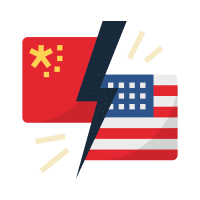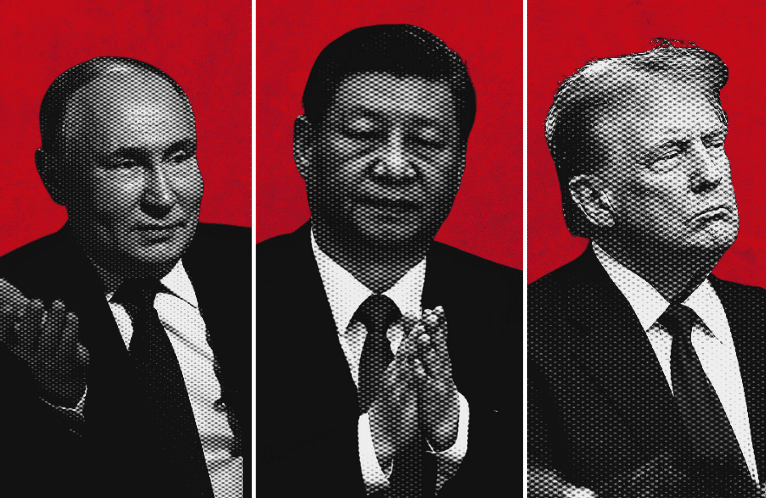The Trump-Sanders China Syndrome
Presidential candidates Donald Trump and Bernie Sanders, with a phalanx of lawmakers behind them, continue to bash China as a “currency manipulator.” Both men claim that Beijing is engaged in a permanent strategy to keep the yuan weak and prop up its trade surplus. But the reality was never that simple, and the charge is ludicrous at present.
Beijing began pegging its currency to the U.S. dollar over two decades ago, as part of its plan to integrate the Chinese economy into a global marketplace in which transactions were overwhelmingly priced in dollars. It stuck by this strategy even during the height of the Asian financial crisis, in 1998, when much of the world was expecting it to devalue. This earned it great praise from the U.S. government. “China, by maintaining its exchange rate policy,” pronounced President Clinton’s Treasury Secretary Robert Rubin, “has been an important island of stability in a turbulent region.”
But once market pressures reversed, and capital began flowing into China, U.S. lawmakers suddenly decided that currency stability was bad: They wanted the yuan to rise, while China continued to keep it fixed. In a 2006 op-ed for this newspaper, Sens. Charles Schumer and Lindsey Graham declared that “one of the fundamental tenets of free trade is that currencies should float.” Such a tenet, remarkably, was unknown to either Adam Smith or John Maynard Keynes,neither of whom ever supported any such thing.
Fast forward to 2016, and capital is now flowing out of China at a prodigious rate. In an effort to slow the resulting fall in its currency, China’s central bank has been selling vast amounts of dollars and buying up yuan. At $3.2 trillion, China’s reserves still seem enormous. But they are down $790 billion from their 2014 peak, and $325 billion in the past four months.
At this pace of decline, China’s reserves will fall to $2.8 trillion in July. To put this in perspective, China, using the International Monetary Fund’s framework for reserve-adequacy measurement, needs to hold between $2.8 trillion and $4.2 trillion in reserves to safeguard against a balance-of-payments crisis. Once reserves fall below an adequate precautionary level, China is at risk of being unable to pay for essential imports or its dollar debts. The IMF estimate could be overly cautious, given China’s relatively low level of external debt, but it could also be too sanguine in that some significant portion of China’s reserves, estimated to be around a third, is believed to be tied up in nonliquid assets—and unavailable in a crisis. These include China’s capital commitment to the new Asian Infrastructure Investment Bank.
So what can China do to stanch the rapid decline in reserves?
The country has for years been pursuing what has been called the “Impossible Trinity”: controlling interest and exchange rates while leaving the capital account significantly open. Chinese residents are permitted to send up to $50,000 overseas annually and this is enough to allow trillions in outflows. China could impose tighter capital controls to prevent this, as Bank of Japan Governor HaruhikoKuroda recently urged it to do. This would allow it to operate safely with fewer reserves. The adequate level of precautionary reserves falls to between $1.7 trillion and $2.6 trillion when adjusted for capital controls. But this would put a halt to China’s plans to transform the yuan into a major reserve currency—something it will be reluctant to do.
China could also raise interest rates, which might encourage capital inflows and discourage outflows, but this would hurt growth in an already sinking economy.
Finally, China could let the exchange rate fall significantly, but this would increase the debt burden on Chinese companies. Outstanding dollar credit to Chinese nonfinancial companies is estimated to be around $1 trillion. Too great a fall in the yuan, coupled with slowing economic growth, could precipitate a corporate solvency crisis.
That China has no good options, and only a choice among painful ones, reflects the underlying structural problem in the Chinese economy—one that will take many years to fix. The economy was tooled to support grossly overoptimistic expectations of foreign demand for Chinese exports. Retooling it to encourage domestic demand will require time and a willingness by the Chinese government to allow businesses to die so that more promising ones may live.
It also shows that American charges that China’s currency was massively undervalued were based on the flawed assumption that capital would want, indefinitely, only to get into China and not out. It’s a sure bet no one in Washington will be calling for China to float its currency again anytime soon.
By BEN STEIL and EMMA SMITH Mar. 29, 2016 on the Wall Street Journal
Read more here








